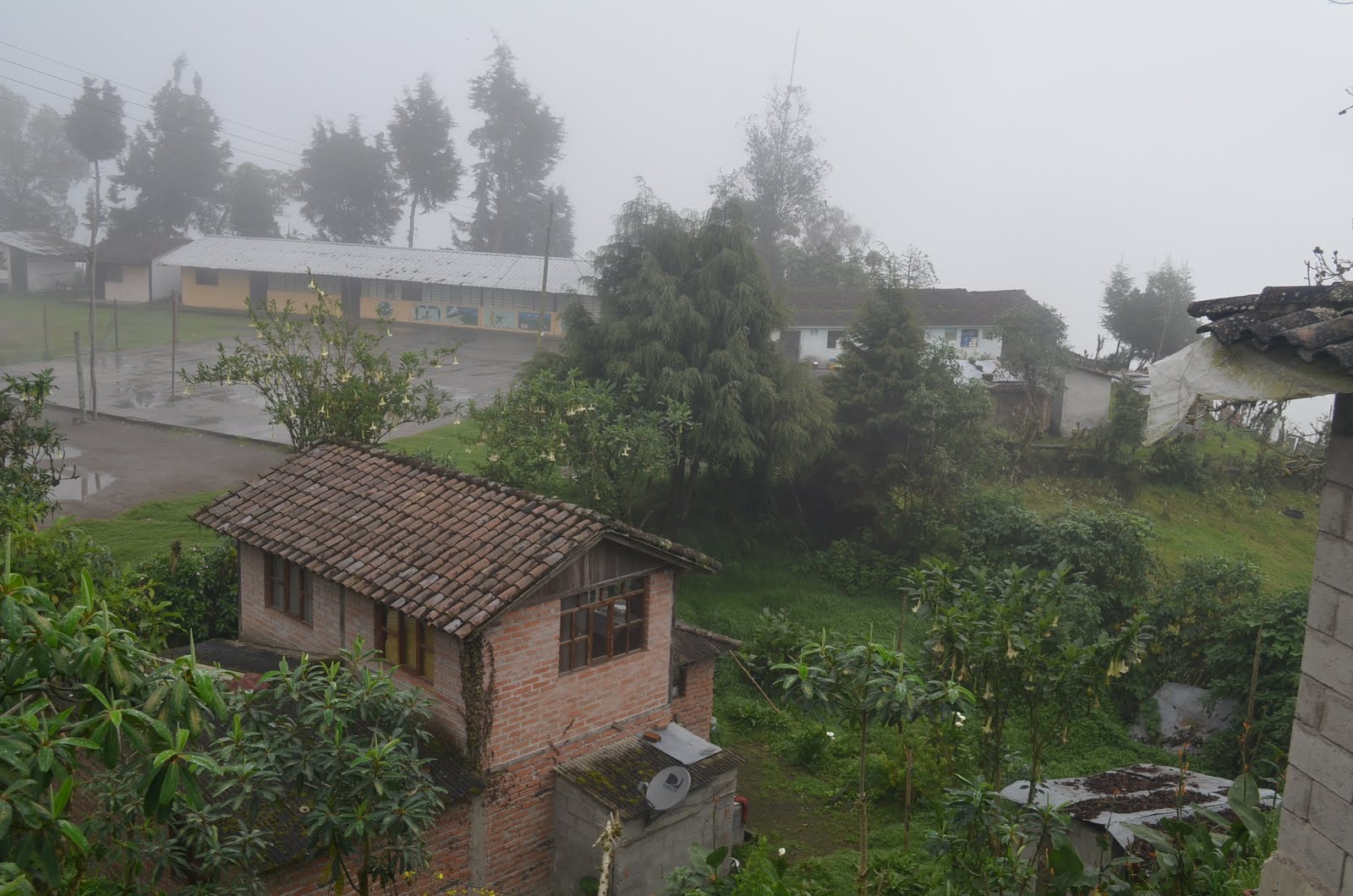A New Perspective
By: Tatiana Gelaf
A view Yunguilla shrouded in clouds.
After spending three eye-opening days on the Galapagos Islands, we returned, exhilarated and slightly sun-burnt, to Quito. It was then that we could begin processing and thinking about what we had seen, and what could be done to preserve the wonders we’d experienced, along with the friendly and hard-working people we’d encountered on the islands.
In order to get some ideas, we visited the self-sustainable mountain village of Yunguilla. We were fortunate enough to be able to walk around the community, go inside one of the homes built there, and learn about the history of the one-of-a-kind population.
A farm plot used to grow the vegetables which are prepared for tourist consumption.
We learned that the unique lifestyle of the people had come to be through concern of the dwindling forest in the area. The methods that the inhabitants were using to support themselves were harming the environment around them, making their way of living unsustainable. A new, revolutionary system was needed, a system that would protect both the environment, and the standard of living of the peoples who populated the area. The result of these efforts is a community that grows its own food, educates its children in ecologically sustainable practices, and uses tourism as a powerful tool to finance its future projects, all while peacefully coexisting with the flora and fauna of its environment.
Touring through the village, we were able to see firsthand cows grazing on slopes, and plants growing in small plots of land, enriched with organic fertilizer. We were also able to visit the two small factories in the village, in which cheese and jams are made. The specially-trained workers showed us the processes they used to turn their locally produced milk and fruit into products that could be eaten or sold to tourists. Finally, we visited a craft center which children could attend in their free time. The guide showed us the way they recycled their own paper, introducing the children to sustainable practices through arts and crafts.
Local women working to prepare strawberry jam in one of the community's factories.
Every aspect of the community was geared towards protecting the environment while maintaining a high standard of living for the people. We left Yunguilla enriched, warmed by the hospitality of the people, and all the more ready for our summit.
A plaque hung inside the home of a family who hosted tourists. It reads: "The wealth of man is measured by the quantity and quality of his friends. Thank you for adding to my riches."
